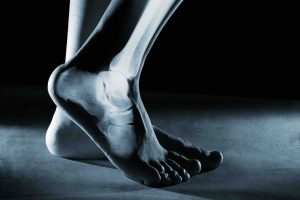Turf Toe
 A relatively common injury, Turf Toe occurs when the ligaments around the joint of the big toe become sprained. Sports that require running and jumping often cause Turf Toe. Rather than arising from overuse, Turf Toe often occurs from a specific instant of impact. Typically seen in sports played on artificial surfaces, when the toe suddenly hyperextends a sprain of the ligaments of the toe may occur.
A relatively common injury, Turf Toe occurs when the ligaments around the joint of the big toe become sprained. Sports that require running and jumping often cause Turf Toe. Rather than arising from overuse, Turf Toe often occurs from a specific instant of impact. Typically seen in sports played on artificial surfaces, when the toe suddenly hyperextends a sprain of the ligaments of the toe may occur.
What causes turf toe
On the bottom side of the foot, two small bones called sesamoids provide leverage to the big toe with movement. Sesamoids lay within the tendon responsible for movement of the big toe and supply support to the big toe. The sesamoids also shock absorb during walking, running, and jumping. When the big toe remains flat with movement rather than gradually pushing off, the ligaments may hyperextend and sprain. Turf toe may also occur from being tackled in contact sports where the patient does not have time to properly move their foot.
Symptoms of Turf Toe
All patients process pain differently and severity of the injury may cause discrepancies in symptoms. The most common symptoms associates with Turf Toe include:
- Toe pain
- Swelling of the toe
- Decreased mobility of toe joint
How do doctors diagnose turf toe?
Patients should seek medical advise from a board certified foot and ankle orthopedic surgeon. To diagnose Turf Toe, the physician starts with performing a physical exam. After performing a physical exam and asking a series of questions pertaining to the specific injury, the doctor most likely orders diagnostic testing. To diagnose Turf Toe, the doctor often uses X-Ray to determine whether or not the toe has a fracture or other injuries.
How to treat turf toe
To treat turf toe the doctor typically uses conservative treatments, meaning without surgical intervention. RICE, or Rest, Ice, Compression, Elevation typically allows Turf Toe to heal. To help with managing pain, the doctor may  prescribe non-steroidal anti-inflammatory medication. To protect the toe, the doctor may suggest the use of a walking boot or cast to hold the joint steady. Patients should feel improvement in two to three weeks. In severe cases, the doctor may need to resort to surgical intervention followed with a physical therapy regimen.
prescribe non-steroidal anti-inflammatory medication. To protect the toe, the doctor may suggest the use of a walking boot or cast to hold the joint steady. Patients should feel improvement in two to three weeks. In severe cases, the doctor may need to resort to surgical intervention followed with a physical therapy regimen.
To view a list of all insurances that AOA Orthopedic Specialists accept, click HERE. To schedule an appointment online, click HERE.

